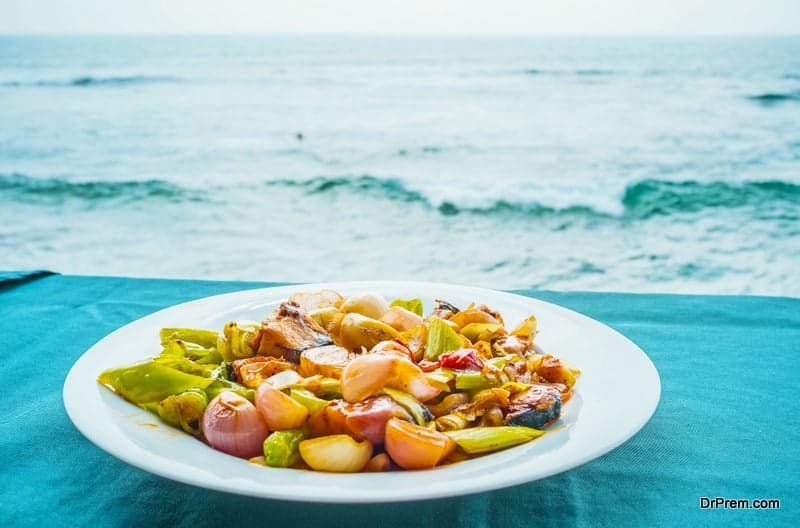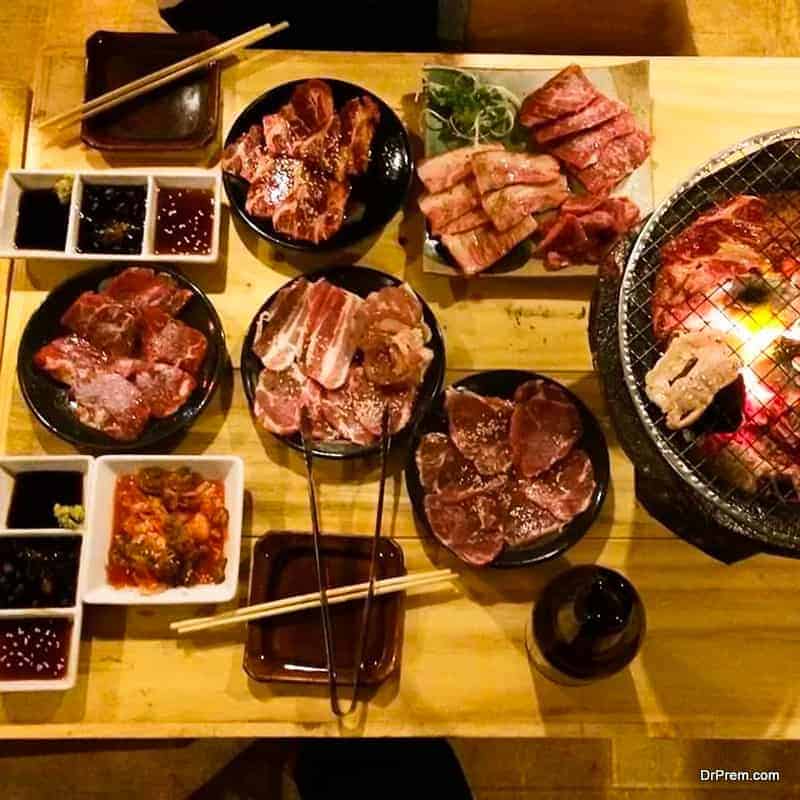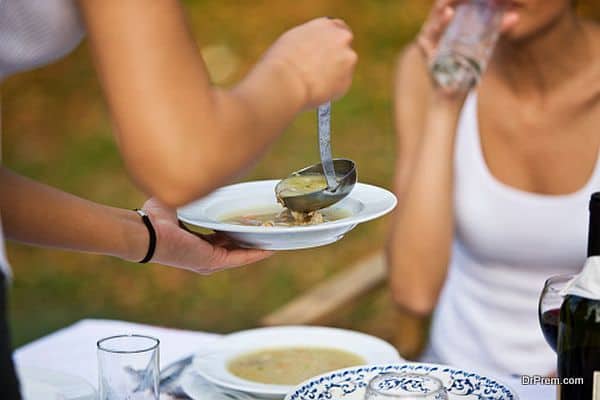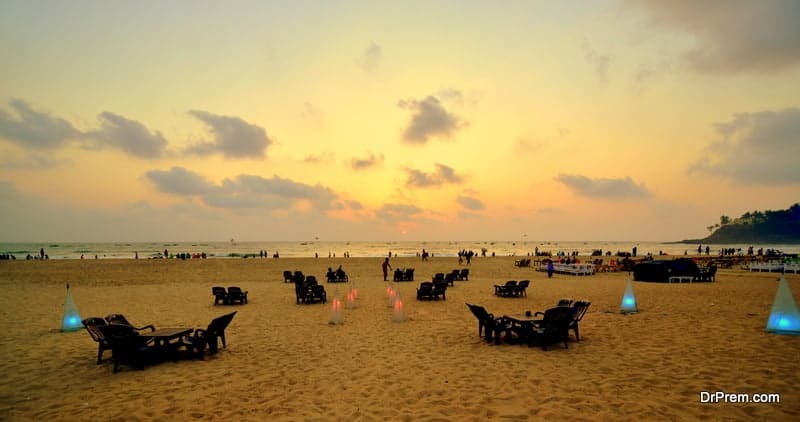Culinary tourism in organized shape is relatively a recent practice giving rise to an offshoot tourism niche. However, man’s love for good food is a much earlier phenomenon. Culinary tourism is a creation of historical and modern culture. Gastronomic tourism, also known as culinary tourism as per the popular jargon within tourist circles goes back to exploring the treasures hidden in an alien kitchen.
A Complete Guide to Culinary Tourism by Dr Prem – History, Definition and Terms, Components, Planning Tips and Destinations
-
History of culinary tourism
-
Evolution of other terms
-
Starting of culinary tourism
-
Unique sharing of taste and culture
-
Essential components of culinary tourism
-
Is culinary tourism for you?
-
Travel and tourism arrangements in culinary tourism
-
Importance of planning in culinary tourism
-
Do a thorough study of local cuisines and ingredients
-
Check the probable price and health benefits
-
Plan to attend food festivals
-
Dos and don’ts while on culinary tourism
-
Countries promoting culinary tourism
-
Mexico
-
France
-
Italy
-
Thailand
-
San Diego, California
-
Vietnam
-
Caribbean Islands
-
Famous Food Destinations for gastronomic adventures
-
Awesome dining destinations to delight your tastebuds
It is a wonderful departure from usually what we eat at home. It is adventurous forage into what an unfamiliar cuisine from a foreign country tastes like. This is, in fact, a way of delving into the depths of an alien culture sampling the typical delicacies of a foreign country. However, it would be quite interesting to learn about the history of culinary tourism and how it gained popularity.
History of culinary tourism:

Image Source : news.gtp.gr
This newly emerged tourism trend gained popularity in 2001. It was in this year Erik Wolf, the president the International Culinary Tourism Association (ICTA) launched a white paper about culinary tourism. He defined culinary tourism as “The pursuit and enjoyment of unique and memorable food and drink experiences, both far and near”.
Interestingly enough, The World Food Travel Association stopped using the term “Culinary Tourism” in 2012 because various researches revealed that it gave a misleading impression. Even though the word culinary can be used to describe anything related to food and drinks, a majority of English speakers perceived it as elitist.
In came the term Food Tourism covering a wide range of experiences starting from local food carts, eateries to gastropubs, wineries or high-end eating places. Even drinks are covered in Food Tourism as it would be cumbersome to use the term Food and Drink Tourism.
Evolution of other terms:
 This is not all. As culinary tourism grew, another specific term Gastronomy Tourism also came into vogue. This phrase was mostly used in Europe, the speakers of romantic language. To them, “food tourism” sounded very basic and didn’t have any cultural tinge. It is like ancient cave dwellers roaming in search of food. Whereas, the word gastronomy reflects culinary culture and tradition and therefore Gastronomy Tourism makes most sense.
This is not all. As culinary tourism grew, another specific term Gastronomy Tourism also came into vogue. This phrase was mostly used in Europe, the speakers of romantic language. To them, “food tourism” sounded very basic and didn’t have any cultural tinge. It is like ancient cave dwellers roaming in search of food. Whereas, the word gastronomy reflects culinary culture and tradition and therefore Gastronomy Tourism makes most sense.
Starting of culinary tourism:
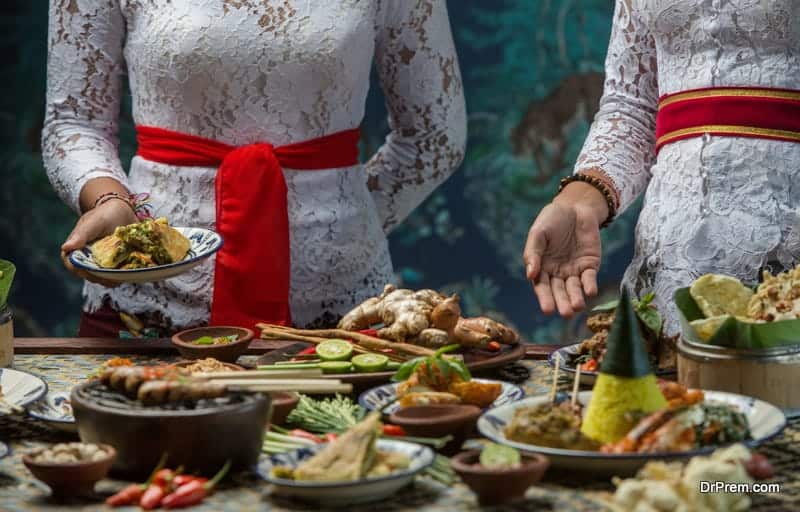 Traditionally, a specific cuisine represents the country they originate from. Mention of the very name of the country brings forth the name of the archetypal food in a flash. While making a visit to the country, the tourist has in mind a desire to sample typical local delicacies.
Traditionally, a specific cuisine represents the country they originate from. Mention of the very name of the country brings forth the name of the archetypal food in a flash. While making a visit to the country, the tourist has in mind a desire to sample typical local delicacies.
First it is the country that is to be visited and next comes the target of sampling its food. Gradually, gastronomic escapades turned stronger with shifting preferences, and emphasis was laid on sampling exotic cuisine and wine for which the country needs to be explored.
The range, taste, flavors and diversity of cuisine on offer worldwide is enormous. The British fish n chips are typical to the isle’s charm. Italy is represented by an assortment of legendary pastas, pizzas, spaghettis and lasagna and mozzarella cheese.
Japan has its lure of sushi, sea weeds and fish .Thailand with its world famous hot and spicy mix of rice, chilly, chicken, bamboo shoots, herbs and sea food has lots to fill your plate.
The Middle East and North African countries have a typical Bedouin touch to its mouth watering kebabs, lamb, date puddings and pita bread. American cuisine is typified by steaks of medium and rare medium cook. There are exquisite German chocolates, cakes, and sauerkraut and pork delicacies.
There are surprises and shocks like the Korean dog dish and Mynamar’s Nappi. However, these are delicacies that have tempted tourists from different corners of the world down the ages. Eventually, culinary tourism evolved from the earlier experiments in the realm of gastronomy and boomed into a large scale tourism activity.
Unique sharing of taste and culture:
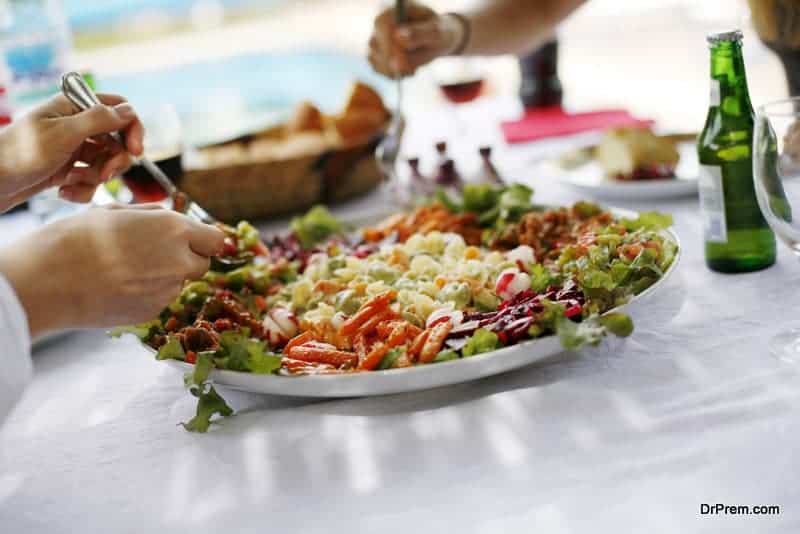 Culinary tourism involves international sharing of eating habits of different races and cultures nurturing a sort of global exploration. Many tourists have a strong craving for sampling alien cuisine just out of curiosity, which has gradually paved the path to culinary tourism and is a powerful motivating factor to hop from country to country and sample food.
Culinary tourism involves international sharing of eating habits of different races and cultures nurturing a sort of global exploration. Many tourists have a strong craving for sampling alien cuisine just out of curiosity, which has gradually paved the path to culinary tourism and is a powerful motivating factor to hop from country to country and sample food.
History shows that cuisine and wine are prime attractions, which makes a destination a famous crowd puller. Like people flocking the sea beaches of Goa in India would certainly try out vindaloo, a local pork delicacy done in coconut milk.
Like the beaches and the iconic church of Bom Basillica, the Goan vindaloo and cashew Feni (a local brew) have added a wonderful dimension to the region’s tourist appeal and has drawn tourists from distant lands.
The inclination towards culinary tourism had gradually become prominent since past, and destinations have been clearly defined with their gastronomic charms making them most sought after culinary tourism destinations.
Essential components of culinary tourism
Availability of natural resources

The basic factor that goes into making a tour destination a hotspot for culinary attraction is the availability of natural resources like fresh water lakes, marine coastline, rivers and estuaries and other small water bodies where edible fish, shrimps, lobsters, prawns, crabs, clams and other aquatic animals can thrive naturally or through artificial farming.
They are harvested, cooked and made available on the dining plate of the tourist in all their succulence, taste and flavor. The quality of the grazing lands and lushness of pastures have a direct impact on the taste, texture and flavor of the vegetarian and non-vegetarian delicacies. The quality of beef, lamb and poultry largely depends upon the feedstock these animals get.
Nurturing and cultivating local resources and culinary tradition
The animal farm locations are kept far away from sources of pollution that might adversely affect the quality of meat. Industrial wastes should be controlled by effluent treatment and ensured that they do not find a way into the water bodies harming the aquatic flora and fauna. Vegetables, grains and cereals are to be farmed using organic fertilizers as far as possible to retain their quality and taste.
To make a culinary tour destination appealing, the local cuisine should have a history and traditional culture to support its acceptability. The mention of the food should recall the country of its origin in an instant flash. It gives the place an iconic reference, and more importantly it should be served fresh. Fresh catch from local waters, freshly plucked fruits, garden fresh tea, coffee and cocoa and the like should adorn the serving plates and cups. This freshness somehow conveys a wonderful feeling that your proximity to nature is always ensured, which has a tremendous impact on the consumers’ psyche.
The cuisine made available to the tourist should be locally procured from local waters, farms and pastureland and not imported from a distant land. This gives authenticity of the culinary delicacy that it has its roots in local soil. This has a powerful impression on the tourist who craves for an insight into the local culture through local food.
No tourist likes to travel all the way to Holland to taste Indian curry or flavored Pakistani lamb biriyani for that matter. Holland should be targeted if cheese and pastry are what the culinary tourist is looking for. It is the local food that makes a place a glowing spot in the global map of culinary tourism.
If a tourist is after Tapas, he will fly to Mexico or Spain to get a taste of the genuine Hispanic flavor and not to a sea side resort in Hong Kong to get the same. Local cuisine, usually a mix of veggies, fish or meat cooked with local herbs, spices and oil in an indigenous way are all strongly intertwined with local tradition that makes it a legend, and this is what fascinates the tourist thereby promoting culinary tourism.
Decent eating places and dining culture
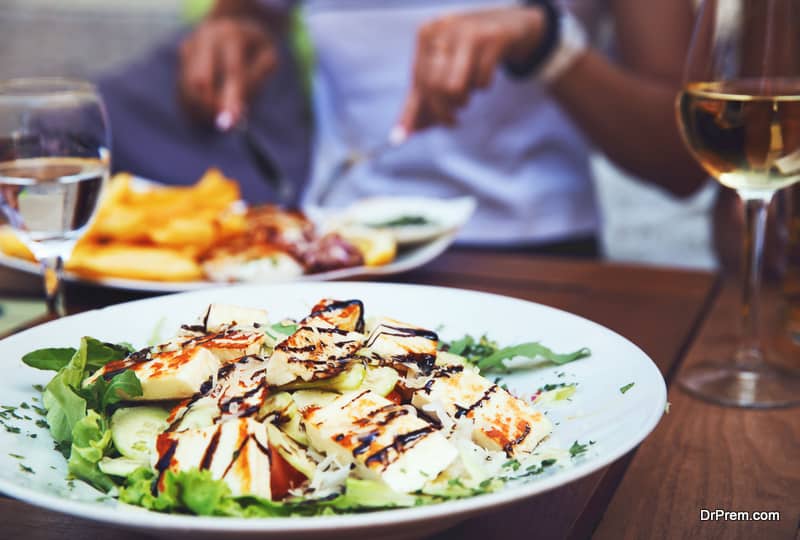
Availability of decent restaurants and eateries is an important component of culinary tourism. The all-important factors that go into making a restaurant popular with the tourist is its standard of health and hygiene, its hospitality, the general atmosphere and interior décor, the wealth of talented chefs that exists and of course the authenticity and quality food served in reasonable prices. Methods of procurement and preservation of food are not to be overlooked.
There must be proper infrastructure for accommodation of tourists. Culinary tourism must not be looked at in isolation. People coming in to taste awesome cuisine will next look for where to stay. A network of good and decent hotels and resorts are important components to make culinary tourism a thriving business.
Accessibility and cost
On the same plane, one would look for the accessibility factor. They should be able to reach their dream kitchen and move around without any hassle. Arrangement for transport should be trouble free, and the transport route must touch the popular eateries and restaurants. The positional advantage of restaurants is an important component. They must not be lost behind obscurity.
Is culinary tourism for you?

The desire for good food is among one of the strongest cravings for man. It is the food habits that make us the person we are. It has an enormous impact on our physical and mental traits. It comes as a little surprise when we feel our travel to a tour destination is incomplete without foraging into the culinary treasures the region has on offer.
Culinary tourism not only satisfies the quest for our physical pleasure, but is a philosophical journey exploring an alien culture and its traditional culinary specialties and getting a glimpse of the way of life.
If you have a penchant for travelling across the world, you should be attracted by the powerful temptation of the gastronomic delights your tour destination has for you as a pleasant surprise. There is an adventure seeking spirit in all of us. Every one of us likes to have a taste of the unknown. This desire may require a bit of guts to be realized; well that is a separate issue. When this unknown entity takes the shape of trying out food of exotic origin untouched before, very few experiences can be as exciting.
With an access to an awesome range of delicacies, the detailed information of which is available on the net at a mouse click, there can be no reason why should culinary tourism not be your cup of tea.
While visiting a tour destination, your target should be focused on the legendary cuisines of the local region. Like while on a trip to Tokyo, insist on Sushi or teriyaki or sukiyaki rather than on pasta. A restaurant in Rome would serve you better pasta with authentic Italian flavor. Gastronomic expeditions are marvelous pieces of experience. Within the cozy ambiance of a restaurant, having the waiter before you with his hospitable smile and eventually the hot and mouth watering plate of food served, you feel transported to a gastronomic paradise filled with exotic and wonderful aromas.
Culinary tourism is best manifested in savoring items that reflect the image of the destination toured. This is a magnificent piece of experience for you. The joy of having a fresh catch of fish, crab and shrimp from the local waters is just unparalleled. The thrill of having garden fresh vegetables is stunning, and when you do all these food harvest with your own hands in a distant land for quenching your own gastronomic yearning it becomes all the more exciting!
The most exciting part of culinary tourism is not confined to just eating a succulent sea food item inside the cozy atmosphere of a seaside resort of any destination. The theme of culinary tourism extends much beyond embracing the related experiences, activities and exposures that ultimately culminates in that familiar scene of the tourist relishing the plate of delicacy served. The chain of activities starting from the procurement of the food, exploring the method of catch and harvest, the efforts and pains for its preparation in the kitchen and having hands on experience are exciting activities, which make culinary tourism so interesting generating a lot of value addition.
Culinary tourism does not necessarily mean you need to travel all the way to Hawaii to achieve the bliss of it. You can well achieve it travelling just a few kilometers away in a farmland and get your heart and soul into the agricultural methods, usage of organic fertilizers, harvesting, cooking and eventually tasting delicacies prepared from the farm fresh products.
Generalizing the concept, culinary tourism is not limited to a specific class of people. Neither is it designed for the tourists belonging to the higher economic bracket nor it calls for a voyage to a far-off land. The drive is built around the source, the method of procurement, cooking process and the entire gamut of cultural explorations worth associated with it.
Travel and tourism arrangements in culinary tourism
The role played by travel and tourism arrangements is instrumental to culinary tourism niche to come in public exposure. Travel agents come forward with all their resources, infrastructural facilities and important contacts to guide tourists pursue their dream of visiting a destination known for culinary specialties. Interested tourists prefer to sample food and wine typical to the region with a view to find out the cultural and traditional heritage of the region. These agents with their dedicated service and expertise turn these dreams into a wonderful reality, awarding the visitors with an amazing gastronomic experience, the memory of which is to be preserved forever.
Getting the right guidance in culinary tourism

Tour operators and travel agents show tourists a finite direction with the twin objective of providing excellent opportunities of experiencing special cuisine, wine and social vibes of an alien land in one hand and enjoying the scenic beauty of the local landscapes on the other.
Apart from the usual services of booking flights, arranging transport, organising travels and finding the best accommodations suiting your budget, they also work hard to locate the famous destinations known for its delicious food and wine. They also guide you in deciding on the best season in order to visit a culinary tourism destination. To illustrate the point, delicacies of jumbo prawns which may seem to be sent straight from the god’s kitchen are available in a particular season. Visiting the place in some other season may not be a wise choice.
Information on culinary tourism packages
As you step into the travel agency’s office who have specialized their skills in framing memorable culinary tourism packages, you will be startled to see what is waiting for you! The chief hotels and regions worth a visit for sampling food and wine are displayed focusing a lot on the presentation. Pictures of local food festivals and the harvest of fruits and vegetables from farmlands, succulent clams and other edible aquatic life caught off the waters of the local lakes, rivers and estuarine enclosures are their prime displays. Not to mention that these photos, brochures, texts and other forms of displays have a stimulating effect on the tourist looking for culinary tourism, and a positive response is likely to come from him.
The emphasis is always to present how the local cuisine has influenced the life and culture of the locals. Travel agencies are well informed of the festive and harvest seasons of a particular destination, and would do enough to make you be present amid the hub of activity centering the food and culture at the right location and at the right moment.
Bright, colorful and lively displays hanging from the walls of the travel agency’s office strike your mind raising your urge to explore the culinary varieties of the destination as soon as possible. Background information on the food health benefits, the region they grow are also provided highlighting their growing conditions in order to prove the worthiness of the destination.
The entire itinerary is planned to perfection with enough tourist feedback and reviews, and the meticulously arranged fun trips will make you feel every moment of your culinary tour venture packed with sheer joy.
The travel agencies concentrate on excellent customer service ensuring that the tourist does not miss the opportunity of an exposure to the best eating place serving authentic regional cuisine, graded premium wine, culinary classes or short duration workshops to get an insight into the local tradition and culture.
With the trend of culinary tourism on the rise, the dependence on travel and tour agencies have mounted. There is a stiff competition within the industry. Travel agencies are pressed into a frantic race in order to offer their best. They are constantly looking into new creative areas of customer services including them into the package. Credentials and the trend in providing gratifying service are crucial factors that need a serious consideration prior to selecting the service of a travel agency.
Importance of planning in culinary tourism

Planning a culinary tourism could be tricky specially while trying out an alien dish. Two things are to be borne in your mind – whether it will suit your taste and the budget. You certainly do not decide one fine morning to catch the first morning flight to Zaire to have a taste of the real local cuisine. Your enthusiasm may turn into horror if you find that you had been served a plate of boiled mix of worms, snails and wild mushrooms. Though the protein content may beat a piece of beef steak, but surely this was not for which you had flown all the way from Seattle to Zaire.
Do a thorough study of local cuisines and ingredients
Browse along your internet search engines and there you go! You have an entire description of all the legendary cuisine of a country and regional delicacies that are the true representatives. It is the name of the cuisine by which the country had been known to the world. The Italian pasta, the Japanese sushi or fugu , the Argentine steak, the Indonesian satay and the Chinese Peking duck or Hakka noodles have crossed their respective geographical boundaries in terms of popularity .
These typical cuisines, in fact, had become a cultural icon for the country in question. They carry the regional flavor and have been intertwined in a close bond with the local history. With the passage of time, the food may have evolved into an altered taste due to experiments done in kitchens, but that did not reduce its gastronomic appeal a bit.
The net gives you a whole range of information as regards the best restaurants that serve the local cuisine you are looking for. Information on the background of the cuisine with a detailed method of preparation including all good things that go into the making, the accompanying herbs, the medium of preparation, the choice of cuts as for example in beef, the type of feed on which the animal or poultry had grown up, the climate and the required temperature that goes into seasoning are all interesting bits of information that make a cuisine so appealing.
Check the probable price and health benefits
The tourists across the globe are driven a strong desire to tour the country of its origin to sample the authentic taste. Price, health benefits and risks linked to cuisines are important issues to be considered. Restaurant prices often displayed on the web inform you about the actual money you pay to get a plate of similar food in a similar region so that you do not get cheated on paying the bill. Apart from making you price conscious, it helps working out your tour budget to estimate what fraction of your entire tour budget you need to set aside on food.
Plan to attend food festivals
Food festivals representing different countries, which are quite often organized in eminent hotels, can provide an insight into what a culinary tourism could be like. There you find a number of countries represented by a group of qualified chefs with enormous talent demonstrating mouth watering cuisines paired with choicest of wines. These mix of delicacies are very much native to the history, culture, tradition and a way of life of the land and its people. Attending these cuisine exhibitions provides you with an answer to what you are actually looking for, and whether it could inspire you to plan a trip of culinary tourism.
Dos and don’ts while on culinary tourism

Enjoying food has a tremendous sentimental value. It is an art that speaks of the cultivation of etiquettes while eating. The most important thing is to observe table manners while dining in a place you have visited on tour.
Proper use of cutlery
Use of knife and fork is not compulsory. You may use your fingers as well. However, when using the fork and knife make sure you use them correctly.
Eat clean

Do not turn your plate a garbage bin. After your meal is over, leave the place tidy. In some restaurants, it is a general practice to leave tips for the waiter while it may be considered a bad gesture in some others. It is expected you follow the ruling custom.
Check before you order
Before ordering, ensure you have enough money to pay the food bill. Make the best use of your debit and credit cards if you run short of cash. This is will save you from embarrassing situations.
Food bills are quite often loaded with a plethora of taxes like service tax, luxury tax, entertainment tax etc. Known your tax burden, and have a realistic estimate of how far the effect of tax is going to push your food bill up.
Choose carefully, your gut may not accept anything delicious
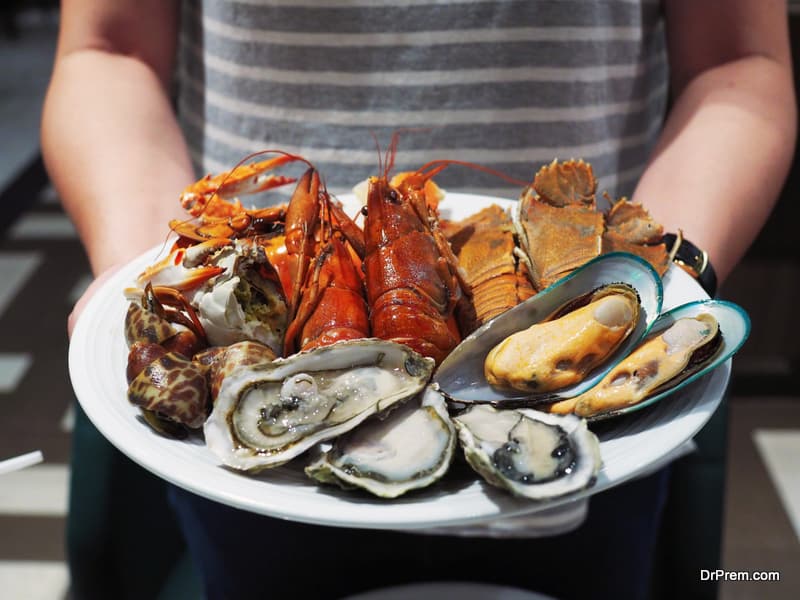
When on a sea side holiday, do not eat whatever food you come across. Sea food may pose serious health issues if you are not habituated in these delicacies. Do not be too adventurous. Most puffer fishes are deadly poisonous and can be a menace!
Be mindful about drinking water
When having a hearty meal in a road side food stall do not rely too much on the drinking water offered. Buy and use your own packaged water as a safeguard against invading diseases carried by germs in the water offered by the road side food stall.
Scan the menu card

Do not place your order without consulting the menu booklet. Ensure the restaurant has the food you are looking for. If language is a barrier, the issue will turn acute and will result in misunderstanding culminating in a bad scene.
Avoid getting drunk
If you have chosen to have a drink of your choice to accompany your food, for god’s sake do not get drunk. It is advised you pay your bill after each subsequent drink to avoid misunderstandings regarding food and wine consumption and bill settlement issues.
Do proper research on eateries

Do not ever ask your cab driver to take you to the best restaurant in town that serves tasty and authentic cuisine. He may not be a much reliable source of information. He will simply drive you to a joint that pays him money for every customer he finds for it. Searching information about good restaurant and eateries can be done on the internet or local tourist information centre.
Ensure you get fresh food
Since culinary tourism involves consumption of vegetarian and non-vegetarian food, one should ensure they are served fresh. Consuming stale food no doubts will invite serious health issues. Ensure that the food is served directly from the oven and not the refrigerated stuff.
Join cooking classes
When being on a culinary tourism to a distant land, it is always advisable to enroll in a cooking tutorial. Here, you can have hands on experience in cooking local cuisine under the guidance of local chefs. This is no doubt an important value addition in your culinary tourism. The skill acquired can be well utilized to fascinate your guests someday with awesome cuisine prepared and delivered with professional skill.
Countries promoting culinary tourism

Culinary tourism is also gaining global popularity along with other modes of tourism. Recognizing its enormous potential, many countries have taken an initiative to popularize and market the magical spell of their domestic cuisine all over the world. Culinary tourism reflects the cultural side of food and is a powerful media for cultural exchange and exposure. The countries that have taken encouraging steps forward to exploit the promises latent in their culinary wealth are Mexico, France, Italy, Thailand, California, Vietnam and the Caribbean.
Mexico
Mexico is certainly a much sought after culinary tourism destination. The promotional steps taken by this nation is from a support of its cultural past. The Aztecs have a profound influence on Mexico’s heritage .They were the first to cultivate maize corn for consumption and domesticated it from its wild past. The eateries and restaurants that boast of tapas, tacos and tortillas have on offer the exhibits of artifacts and cultural legends of the pre Hispanic Aztec cult. The evolution of the cooking style, herbs, choice of meat, spices, use of chilly and other ingredients from the Aztec kitchen down Hispanic cuisine is well traced and put to tourist exposure. Annually, a substantial influx of tourist flocks around Mexican bars and restaurants.
France

Traditionally, French cuisine and wine had been a major draw for the tourists round the world. There goes an adage that everything the French does, style is a distinct feature. For that matter, they cook and eat in style as well. Despite the mass consumption of cheese, fat and meat, the rate of cardiovascular diseases had been very low. Possibly, the consumption of wine and limited intake of food had worked the miracle!
France had been the kitchen capital of the world and is much admired by the food aficionados. The French are conscious of the fact. Therefore, their drive to make their country a centre of attraction for culinary tourism had been sincere and innovative. Sprinkled across the French cities are wonderful patisseries, bakeries and world class wine shops.
The French cuisine guarantees authentic cuisine accompanied by heart filling amusement. To give infrastructural support and expand culinary tourism, the French have on offer luxury villas and exclusive hotels and great resorts. The top notch cooking schools offer exceptional cooking courses, live demonstrations and featured instructions from a pool of talented chefs.
Italy
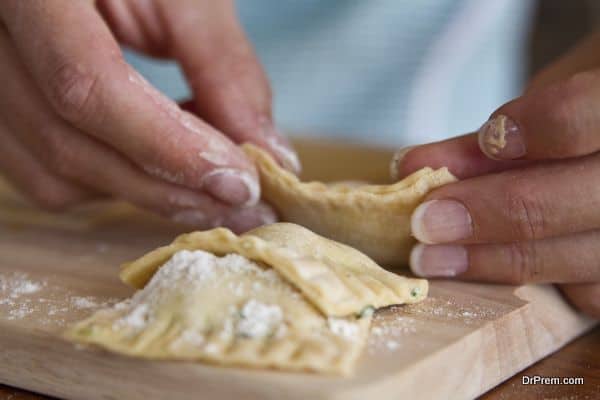
Italy offers an abundance of opportunities to the interested tourists to learn to cook the Italian way. The tourist is fascinated by mouth watering spaghettis, lasagnas, pizzas and pastas coming up with a miraculous touch of his own hands trained under the guidance of Italian chefs. The food served is authentic and delicious with a predominance of olive oil. The restaurants are outstanding and cozy, the ambience and hospitality unmatched.
Thailand
Thailand presents authentic culinary and cultural exposure to the tourist. It is often called the food capital of South East Asia. The country has arrangements for guided food tours which leave the tourist gratified and beaming with delight. There are fine dining restaurants, Thai roadside eateries and stalls with amazing architecture in the background standing as an arresting cultural logo .Hospitability is unquestionable and the major factor is pulling culinary tourists from all corners of the world.
The food is mouth watering, tangy and hot with bits of everything like meat, poultry, rice, bamboo shoots, baby corn, sea food and all done in a great delicious way with rich history which appeals the tourist. A feature of attraction that promotes culinary tourism in Thailand is the floating food market. With boats vending fresh vegetables, fruits, poultry and seafood the picture recall Venice and its gon dolas. This is quite popular among tourists.
San Diego, California
A breath taking culinary tour destination, San Diego in California is a right mix of art, culture and exquisite cuisine. The ambience is calm and quite facing the ocean. There are private coaching classes offering a training on cooking that draws a substantial tourist population.
Experiences in food, wine and fun are marketed in an innovative way that sees a record tourist crowd in California at the end of the year. Napa valley culinary and wine tour is world famous. Based on olive oil, the cuisine offered is just as good as a trip to gastronomic paradise. Here, the excellence involved in pairing wine and food is awesome.
Vietnam
Promotional initiatives taken by Vietnam to draw culinary tourist is great with its wide range of cuisine having a distinct flavor and taste. The food is healthy, tasty and comes in varied shades. The basic cuisine has three distinct characters. The northern regional cuisine is influenced by Chinese cooking for its proximity to the country where the food is light and soft.
The central Vietnamese cuisine is dominated by the culturally genuine food influenced by king Hue’s royal kitchen, which is spicy and seasoned. The south regional cuisine is influenced by a French-Thai mixed school. It is heavily spiced, seasoned, and sweet and has sea food in generous measures. Cooking classes exist, which are appealing to gastronomic buffs.
Caribbean Islands
Apart from the beckon of the sun, sand, surf and the sea, the Caribbean islands have a wealth of delicious cuisine and rum to drink. Sea food, especially the fried fish served on the beach has caught the tourist fancy. To enhance the draw, deluxe beach resorts dot the shoreline and the atmosphere comes alive with exotic food, rum, local pageantry and fun. A combination of these cast a spell on the tourist, which is powerful and mesmerizing enough.
Famous Food Destinations for gastronomic adventures
Good food is an important driver that inspires tourism. Gastronomic enthusiasts make it a point that they do not miss out on visiting destinations spelling magic with their legendary culinary delicacies. A list has been drawn here ranking destinations according to their popularity so far as the culinary appeal strikes:
Mexico City
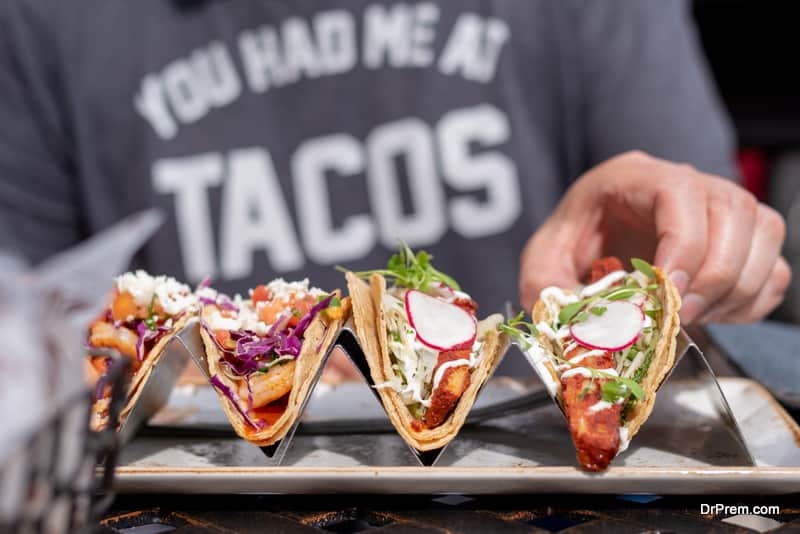
This is one of the top food destinations of the world. Mexican food is fundamentally a wonderful mix of traditional Mesoamerican and Spanish cuisine evolved over time. There are expensive and posh eateries and road side food kiosks as well. Mexican kitchen has globally inspired food buffs to come over to Mexico and take a bite. The city has a wide range of food and wine on offer including tacos, tapas and tortillas, the typical trademark Mexican dishes. The basic ingredients cover corn, tomatoes, chilies, beans, peppers which find an important position in the tasty native Mexican dishes. Beef, chicken, pork and an assortment of cheese delight the gastronomic tourists. Tortilla made from ground corn, treated with fresh lime juice and rolled into dough is simply awesome!
Barcelona, Spain
Spanish food has won the hearts of a million foodies. Barcelona is one of the major gastronomic capitals hitting global fame. Sea food, exotic fish, beef and lamb forms the foundation of Barcelonan cuisine. As dawn breaks over the city, you get to see the chefs getting busy gathering around shopping for the magic Mediterranean herbs and spices that goes into Spanish food making it delicious. These chefs are a bundle of talents and can make your Spanish gastronomic venture exciting as ever. The wonderful Mercat de la Boqueria is a food buffs’ paradise. There are startling food kiosks serving fresh sea food and veggies done wonderfully in accompaniment of tasty tapas to give you an unforgettable piece of relish.
Italy
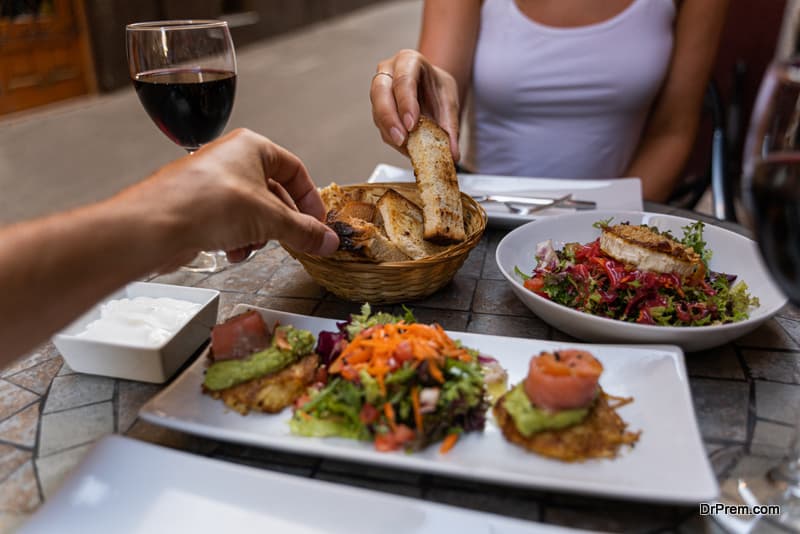
Almost the entire Italy is crowded with exquisite restaurants and pubs. Good food and wine literally flow off the kitchens and cellars. Typical Italian delicacies like lasagnas, pizzas, pastas, and a wide range of cheese, olives, seafood and meat have fascinated gastronomic enthusiasts since long. Tuscany is one place where red wine in combination with pasta and meat filling would send you straight to paradise. The aroma is intoxicating and the taste unbeatable.
France
There stands a French paradox that despite consumption of large quantities of cheese and red meat the French has a sound cardio vascular health. Consumption of wine may have been a contributory factor as well in keeping a Frenchman’s heart healthy pumping with vigor. Nevertheless, a French combination of meat and cheese had been a legend. It is a food enthusiasts’ ultimate quest. Meat dishes done in highly seasoned sauces are a gastronomic delight. Desserts and pies are simply awesome. Fresh sea food comprising of exotic fishes and mussels are a great treat as are the tasty snails when washed down with exclusive wines. The French loaf is quite famous all over the world and cheeses work wonders! As you concentrate on your plate and glass, the panoramic view of the rolling pastures and stunning landscapes demand your attention with the same force as the food wins over your taste buds.
Croatia
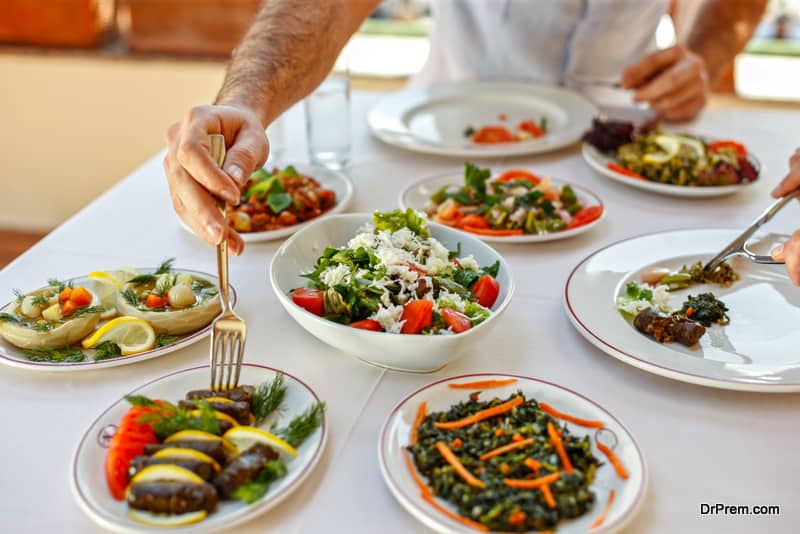
Wedged between central and eastern European cuisine influence, Croatia is indeed a top food destination demanding repeat visits by the gastronomic buffs. The Croatian cuisine is a fusion of the Italian, central European and the historic Ottoman school of culinary art. The principle diet comprises of cheese, a variety of meat, noodles, tingling beers and fruit extracts. Istria is a place with overlapping Croatian and Italian kitchen influence. It is famous for exotic mushrooms, truffles, sea food, olives and prosciuttos. Paired with the right choice of wine and fruit juices, these treats are guaranteed to be a memorable gastronomic venture!
Your culinary tourism guide is not complete without knowing some special dining destinations. Here are a few of them.
Awesome dining destinations to delight your tastebuds
Good food and finest of drinks make our life merrier. Undisputedly, awesome cuisine served with style works wonders. A strong desire for mouth-watering gourmet delights is a primitive instinct in human causing salivation at the sight of tasty food and the tempting aroma that it gives off. In fact, authentic tasty food done with the right mix of spices would enhance your appetite manifold. Hunt for good food is in our blood, and consequently the news of a good dining joint in a town spreads like wildfire when the price becomes a secondary issue.
We would now like to explore destinations with great gourmet temptations:
Plaza Athenee, Paris:
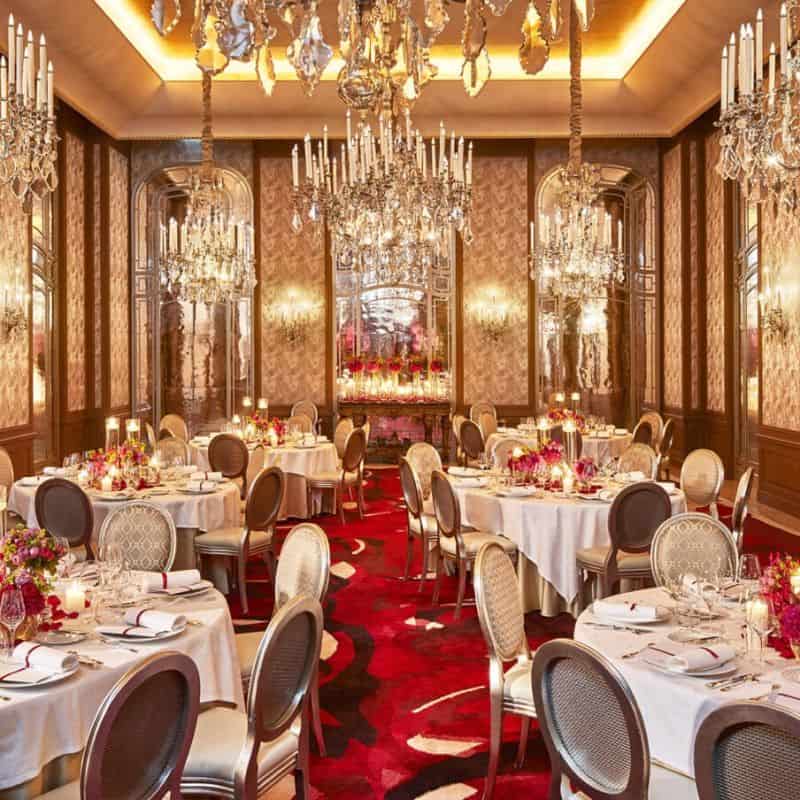
Image Source : dorchestercollection.com
If you would like to pamper yourself with the Parisian gourmet excellence, you must pay a visit to Plaza Athenee in Paris. Noted for a perfect combination of class, gorgeousness and French culinary magic this exclusive restaurant had become widely popular among gourmet buffs. It is not just you select your food, eat it and pay the bill, but it is much of an elaborate affair where you are just a novice and enjoy your choice of food under the guidance of an expert chef. The range of menu is stunning, and you are clearly baffled by the display and would be in a serious dilemma regarding which one to choose. However, the restaurant’s classy palette of biscuits and cream is worth a try and so are the local celebrity dishes like Picardy Hare and Brittany turbot.
Noma, Copenhagen, Denmark:
If you have a desire for modern Scandinavian gourmet, Noma in Copenhagen is the ideal restaurant. Exotic cuisine includes Quail’s eggs cooked and served on a bed of straw or a langoustine perched on a stone. Noma does experiments with the local Nordic cuisine and fuses in a bit of innovation, and what you get is a creative touch on the original cuisine making it a feast on your palette. The restaurant is however a freshly scrubbed warehouse standing on Christianshavn waterfront.
Vue De Monde, Melbourne, Australia:

Image Source : vuedemonde.com.au
Although located in Melbourne, this eatery designed in paradise is hardly an Aussie affair but is out and out a French culinary venture worth an exploration by anyone having a strong penchant for decent food. This is an award-winning French cuisine restaurant conceived by the chef Shannon Bennett and has an impressive theatrical stage appearance with the spotlessly clean white linen on the table and pendant lighting creating a romantic atmosphere. Go for a dinner at the chefs table and watch and feel the aroma of pleasant surprises in store for you. Steaks, creams, cheese assortments and grills would leave a lasting impression on your mind.
Kaiseki cuisine in Kyoto, Japan:
Bringing in a novel concept in Japanese kitchen, Yoshihiro Murata is a respectable name in the Japanese culinary world. He is the modern architect of Kyoto’s multi-course Kaiseki cuisine. Try for an exotic all Japanese gourmet adventure by booking a secluded tatami mat room at Kikunoi to taste delightful sashimi and lightly flavored broth rich in umami. You have the option of ordering tasteful beef, beans and seafood specialties as well. The food is carefully prepared to give a delicate flavor and is artistically served in a collection of lacquered crockery with exquisite design motifs.
The Fat Duck, UK:

Image Source : ichef.bbci.co.uk
Here at Fat duck you are in for a grand treat and expose yourself to the exotic concept of molecular gastronomy. All credit goes to Heston Blumenthal’s culinary magic that would be a wonderful treat to all your senses let alone the exquisite cuisine’s ecstatic assault on your taste buds. For the reader’s information, Blumenthal’s 18-course lip-smacking gourmet has won countless awards. Try and concentrate on high profile dishes like scrambled eggs and bacon ice cream. The combo will last in your dining memory for the rest of your life.


